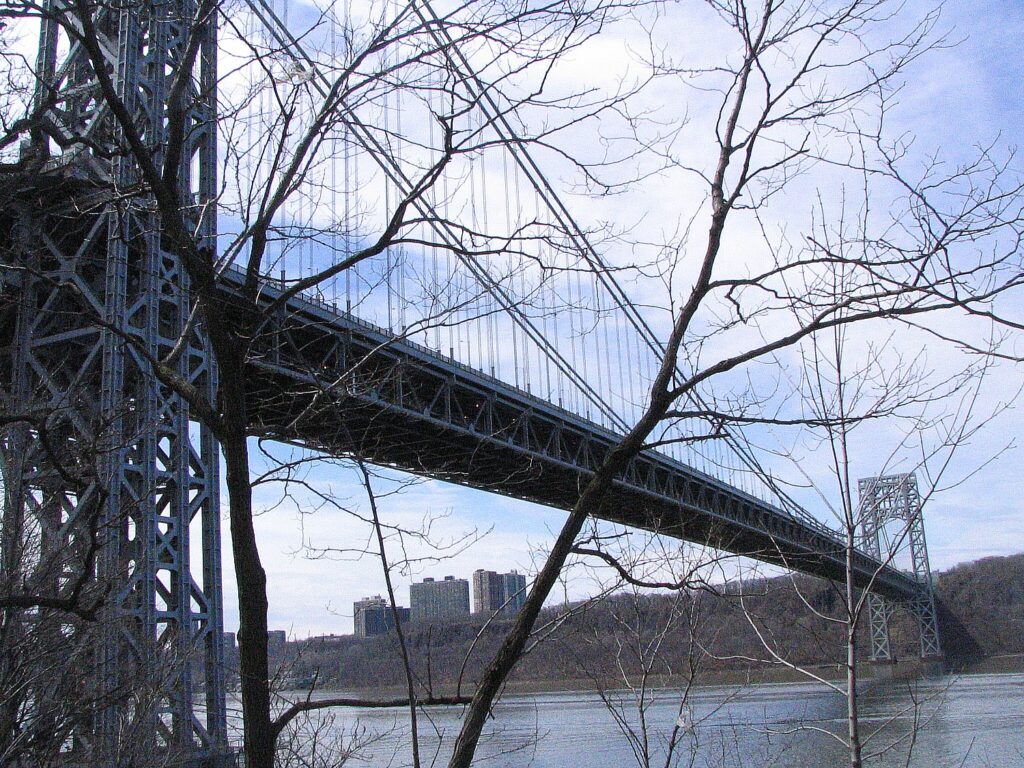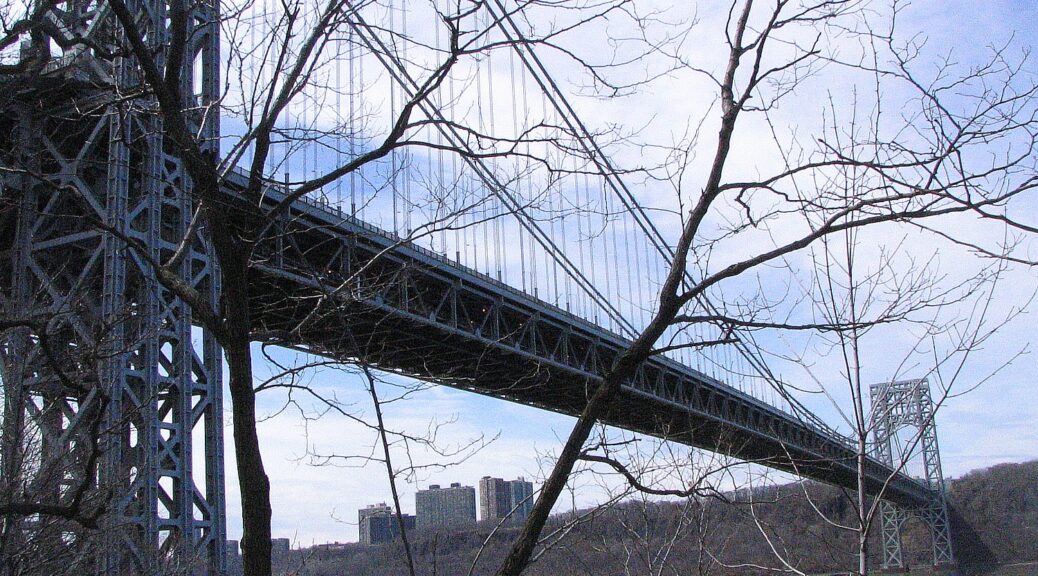
The White House issued a Fact Sheet reviewing results 60 days after President Joe Biden signed the Bipartisan Infrastructure Law.
Since President Biden signed the Bipartisan Infrastructure Law 60 day ago, the Biden-Harris Administration has hit the ground running to deliver results. The Administration has made key progress towards implementing the largest long-term investment in America’s infrastructure and competitiveness in nearly a century.
The historic Bipartisan Infrastructure Law will rebuild crumbling road and bridges, replace lead pipes, help provide high-speed internet to every family in America, and produce concrete results that change people’s lives for the better. These results will create good-paying, union jobs, support domestic manufacturing and supply chains, and position the United States to win the 21st century. As the Administration implements the law, it is following through on President Biden’s commitment to ensure investments advance equity and racial justice, reach communities all across the country – including rural communities, communities of color, and disability communities – and strengthen the nation’s resilience to climate change.
On the day President Biden signed the bill into law, he appointed Mitch Landrieu as Senior Adviser and Infrastructure Implementation Coordinator and signed an Executive Order establishing an Infrastructure Implementation Task Force to ensure the Administration achieves results for the American people. The Administration launched Build.gov to serve as a growing hub of implementation resources, and it kicked off a nationwide tour to highlight the benefits of the law for people across the country.
President Biden surveyed a bridge needing repairs in New Hampshire, toured an electric vehicle plant in Michigan, visited a public transit authority in Missouri. Vice President Harris joined Transportation Secretary Buttigieg in North Carolina to tour an electric bus facility. EPA Administrator traveled across the South during an environmental justice tour. Interior Secretary Deb Haaland toured the West to discuss resilience projects while Energy Secretary Jen Granholm touted clean energy projects from Illinois to Tennessee to Rhode Island. Throughout the tour, the Administration demonstrated how we will work as one team with one mission: to deliver results to the American people while advancing racial equity, combatting climate change, and creating job opportunities for American workers.
Roads, Bridges, and Transportation Infrastructure
- The U.S. Department of Transportation (USDOT) and Federal Highway Administration (FHWA) announced $27 billion in funding to replace, repair, and rehabilitate bridges across the country to all 50 states, D.C., Puerto Rico, and Tribal governments over the next five years.
- Vice President Harris announced an EV Charging Action Plan to achieve the President’s goal of building a national network of 500,000 electric vehicle chargers.
- Transportation Secretary Pete Buttigieg and Energy Secretary Jennifer Granholm formed a Joint Office of Energy & Transportation focused on building out the national network of EV chargers.
- FHWA at USDOT announced $52.5 billion in Federal Highway Apportionment for fiscal year 2022 the largest in decades for all 50 states and DC.
- The Federal Aviation Administration (FAA) at USDOT announced $3 billion for 3,075 airports across the country that can use investments to upgrade critical infrastructure.
- The National Highway Traffic Safety Administration (NHTSA) at USDOT announced $260 million for highway safety programs to reduce traffic crashes.
- USDOT awarded $1 billion in Rebuilding American Infrastructure with Sustainability and Equity (RAISE) grants to invest in 90 major projects across 47 states funding that will be boosted by an additional $7.5 billion in the Bipartisan Infrastructure Law.
- The Maritime Administration (MARAD) at USDOT announced $230 million in Port Infrastructure Development grants to improve ports, strengthen the nation’s supply chains to meet demand resulting from the rapid economic recovery over the past year, and help ease inflationary pressures. Funding for this program will be boosted by an additional $2.25 billion through the Bipartisan Infrastructure Law.
Water Infrastructure
- Environmental Protection Agency (EPA) Administrator Michael Regan issued a letter to Governors outlining the key priorities for water investments, including targeting resources to disadvantaged communities, making rapid progress on lead-free water for all, and tackling dangerous chemicals such as PFAS.
- EPA announced $7.4 billion in funding allocations for states to upgrade America’s aging water infrastructure, sewerage systems, pipes and service lines, and more.
- Vice President Harris announced a Lead Pipe and Paint Action Plan to replace all of the nation’s lead pipes in the next decade and expand access to clean drinking water.
High-Speed Internet
- The Federal Communications Commission launched the Affordable Connectivity Program providing broadband subsidies of up to $30/month for low-income households (up to $75/month for households on Tribal Lands) and up to $100 towards the purchase of a desktop, laptop or tablet computer.
- The U.S. Department of Agriculture (USDA) began accepting applications for the $1.15 billion ReConnect rural broadband program for loans and grants to state, local or territory governments, corporations, Native American Tribes and limited liability companies and cooperative organizations to help people in rural areas get access to high-speed internet, which will be boosted by the infrastructure law.
- Vice President Harris and the Department of Commerce (DOC) announced the first and second sets of grants for the Tribal Broadband Connectivity Program, totaling $2.4 million, which is receiving additional funding through the Bipartisan Infrastructure Law.
- The National Telecommunications and Information Administration (NTIA) at the DOC hosted the first two in a series of broadband listening sessions with more than 1,400 participants to inform how the Administration implements several of the historic broadband program funded by the infrastructure law.
- The NTIA also published a request for comment seeking public input on the design and implementation of the Broadband Equity, Access and Deployment Program, the Middle-Mile Broadband Infrastructure Program, and the Digital Equity Planning Grant Program which together will distribute more than $25 billion in broadband funding.
Clean Energy and Environmental Remediation
- EPA announced $1 billion in funding to clean up 49 Superfund sites across 24 states to accelerate cleanup at dozens of other sites across the country, stop toxic waste from harming communities, and create good-paying jobs.
- DOE established the new Office of Clean Energy Demonstrations, which will oversee $20 billion of infrastructure funding to scale up clean energy, create new, good-paying jobs for American families and workers, and reduce pollution while benefiting underserved communities.
- DOE launched a new Building a Better Grid initiative to accelerate the deployment of new transition lines, enabled by the Bipartisan Infrastructure Law. As part of this initiative, Office of Electricity at DOE released a notice of intent to inform the design and implementation of this historic investment.
- DOI released initial guidance for the states interested in applying for funding to cap and plug orphaned oil and gas wells that reduce methane emissions and create jobs, with 26 states expressing interest in a portion of the $4.7 billion in funding for well plugging, remediation and restoration available in infrastructure programs.
- DOI announced the Office of Surface Mining Reclamation and Enforcement (OSMRE) is extending the Abandoned Mine Reclamation Fund program through 2034. This extension will provide for continued funding to states and Tribes for reclaiming hazardous abandoned mines, replacing polluted water supplies, and reducing legacy pollution in coalfield communities.
- DOE released a request for information on deployment and demonstration opportunities for carbon reduction and removal technologies, representing $10 billion in infrastructure programs.
Historic Bridge Replacement, Rehabilitation, Preservation, Protection and Construction Program
The U.S. Department of Transportation today launched the historic Bridge Replacement, Rehabilitation, Preservation, Protection, and Construction Program (Bridge Formula Program), made possible by President Biden’s Bipartisan Infrastructure Law. The program, to be administered by the Federal Highway Administration, represents the single largest dedicated bridge investment since the construction of the interstate highway system – providing $26.5 billion to states, the District of Columbia and Puerto Rico over five years and $825 million for Tribal transportation facilities. The total amount that will be available to states, D.C. and Puerto Rico in Fiscal Year 2022 is $5.3 billion along with $165 million for tribes. The FHWA also published initial guidance on the new program.
“The Biden-Harris Administration is thrilled to launch this program to fix thousands of bridges across the country – the single largest dedicated bridge investment since the construction of the Interstate highway system,” said U.S. Transportation Secretary Pete Buttigieg. “Modernizing America’s bridges will help improve safety, support economic growth, and make people’s lives better in every part of the country – across rural, suburban, urban, and tribal communities.”
“This record amount of funding, made possible by the Bipartisan Infrastructure Law, will allow states and Tribal governments to fix the bridges most in need of repair,” Deputy Federal Highway Administrator Stephanie Pollack said. “It will also modernize bridges to withstand the effects of climate change and to make them safer for all users, including cyclists and pedestrians. Every state has bridges in poor condition and in need of repair, including bridges with weight restrictions that may force lengthy detours for travelers, school buses, first responders or trucks carrying freight,” she added.
Nationwide, the Bridge Formula Program is expected to help repair approximately 15,000 highway bridges. In addition to providing funds to states to replace, rehabilitate, preserve, protect, and construct highway bridges, the Bridge Formula Program has dedicated funding for Tribal transportation facility bridges as well as “off-system” bridges, which are generally locally- owned facilities not on the federal-aid highway system.
The Bipartisan Infrastructure Law includes an incentive for states to direct the new Bridge Formula Program funds to off-system bridges owned by a county, city, town or other local agency. While states generally must match federal funding with up to 20 percent state or local funding, the guidance issued today notes that federal funds can be used for 100 percent of the cost of repairing or rehabilitating such locally owned off-system bridges.
The Bipartisan Infrastructure Law is a once-in-a-generation investment in infrastructure, which will grow the economy, enhance U.S. competitiveness in the world, create good jobs, and make our transportation system more sustainable and equitable. Specific to the FHWA, the Bipartisan Infrastructure Law provides more than $350 billion over five fiscal years for surface transportation programs.
FHWA released the first tranche of Bridge Formula Program funding to states for Fiscal Year 2022 in addition to the program guidance.
For a map of bridges, see https://infobridge.fhwa.dot.gov and USDOT Bridge Formula Program Funding and Condition by State.
Here is State-by-state BFP funding Fiscal Years 2022-2026.
New York State, for one, has 1,702 bridges considered “in poor condition.” The state is scheduled to receive $378.4 million in FY 2022 bridge formula program funding, and $1.9 billion in the 5-year bridge formula program funding.
The program is set up so that localities – towns and cities – can get 100 percent funding for their bridge repair projects.

